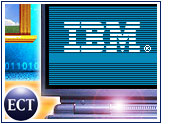
On the heels of IBM’s decision to sell its PC unit to Chinese player Lenovo, Forrester Research is reporting that the number of personal computers in use worldwide will more than double to almost 1.3 billion by the end of the decade.
That’s up from 575 million today, according to the Forrester report, which sizes up PC adoption rates across 16 emerging markets, such as China, Russia and India.
Mature markets in the U.S., Europe and Asia-Pacific will add 150 million new PCs to the world market by 2010, according to the report. More significant growth will come from emerging markets, for which Forrester forecasts that 566 million new PCs will be in use by 2010, up from 75 million in 2003, a 31 percent compound annual growth rate.
Forrester predicts that competition for market share will pit industry leaders like Dell and HP against local emerging market manufacturers and fundamentally change the rules of the game. Price will be the key driver of the pace of adoption.
“Today’s products from Western PC vendors won’t dominate in those markets in the long term,” said Forrester senior analyst Simon Yates. “Instead, local PC makers like Lenovo Group in China and Aquarius in Russia that can better tailor the PC form factor, price point and applications to their local markets will ultimately win the market share battle.”
Different View
IDC analyst Roger Kay told the E-Commerce Times that he has a different view — and different numbers. IDC’s research indicates about 600 million PCs installed as of 2003 figures and anticipates just less than 1 billion PCs installed by 2008.
The key, Kay said, is differentiating between the installed base (those being used) and the shipments (those manufacturers are selling to stores).
“The shipment level this year is somewhere in the 170 million range worldwide,” Kay said. “We expect to see that number grow even though the PC industry is fairly mature and its growth rates are much lower than in previous years.”
Like Forrester, IDC points to penetration opportunities in the less developed world for desktop computers. Kay said even low growth rates in developing countries implies a tremendous amount of new business.
What It All Means
What does all this really mean for the PC market and its players? Forrester believes the PC industry must innovate to thrive. To grow emerging markets beyond the early adopters, firms must develop a new generation of PC products that are affordable, simple, localized, useful, durable and serviceable.
In the battle between western versus local PC builders, Forrester pointed to the sale of IBM’s PC unit to China’s Lenovo Group as evidence that Big Blue understands that a majority of the growth in the PC sector will come from emerging markets and be led by local manufacturers.
However, other than the Chinese market, Kay once again disagreed with Forrester’s predictions. He said the fact that the growth is shifting to the developing world does not necessarily give local players a significant advantage.
“Mitigating the fact that local players have tax advantages and perhaps government subsidies is the fact that large international companies are experienced at making good products and offer the lowest cost because they have huge scale,” Kay said. “They have advantages that appeal directly to the buyers in those markets.”
Other Battles To Watch
The researchers also addressed related matters. In the Windows versus Linux battle, they concluded the advantage goes to Linux because establishing the Windows platform in these new markets would be an uphill battle. Forrester also predicts no Windows legacy in these markets means local manufacturers can drive down prices by installing Linux instead.
In the wired versus wireless providers battle, researchers said theadvantage goes to wireless. Investments in landline networks outside major city centers won’t pay off, according to Forrester, so rural populations must wait for new wireless technologies like WiMax and 3G GSM networks for connectivity. In China, for example, researchers cited Nokia’s and Siemens’ heavy investments in new GSM network coverage for China Mobile and China Unicom, the largest mobile service providers in the country.
Country by Country
The 16 emerging markets analyzed in this report include, in order of population size: China, India, Indonesia, Brazil, Pakistan, Russia, Nigeria, Bangladesh, Mexico, the Philippines, Vietnam, Egypt, Ethiopia, Turkey, Iran and Thailand.
Specifically, Forrester predicts that China will see 178 million new PC users and India will get 80 million new PC users. Indonesia will see 40 million new users (40 percent growth per year). And 46 percent of Mexicans will own a PC — the deepest penetration of PCs as a percentage of population of all 16 emerging markets analyzed.
Despite gaining prominence as a center for outsourcing, India today has one of the lowest PC adoption rates in the world. However, Forrester predicts PC adoption will grow at a 37 percent annual rate through the end of the decade.
Adoption in Waves
Western PC manufacturers will win the first round, but local manufacturers will dominate in the long term. Wealthy urbanites, middle-class literates and, finally, the rural mass market represent the waves of adoption, according to Forrester.
The first wave is made up of wealthy urbanites. Researchers said these educated, brand-conscious, sophisticated PC users started with entry-level PCs but now demand more power from their PCs and are motivated to purchase technology from Western firms like Dell, HP and IBM.
The second wave is middle-class literates. This group represents the sweet spot for PC unit volume sales, according to Forrester, because they are educated consumers, first-time PC buyers, and are targets for local PC makers that tailor the PC form, price points and application to local market conditions. They are also price-conscious and brand-irrelevant.
The third wave is the rural mass market. It’ll be a long-term challenge for the PC industry to attract this segment to the PC platform, researchers said, noting that they are likely to choose PC alternatives, such as smartphones. This group is rural, low-income and very price-sensitive. They lack community infrastructure, funding, communications and reliable power sources to support PC platforms.























































Social Media
See all Social Media